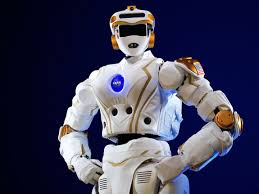
Breaking News
 Calling Dr. Grok. Can AI Do Better than Your Primary Physician?
Calling Dr. Grok. Can AI Do Better than Your Primary Physician?
 Episode 485 - The Dark Legacy of Dick Cheney
Episode 485 - The Dark Legacy of Dick Cheney
 Frugal Friday: 17 Ways to "Use It Up"
Frugal Friday: 17 Ways to "Use It Up"
 Cristiano Ronaldo Praises Donald Trump as a Leader Capable of Changing the World...
Cristiano Ronaldo Praises Donald Trump as a Leader Capable of Changing the World...
Top Tech News
 HUGE 32kWh LiFePO4 DIY Battery w/ 628Ah Cells! 90 Minute Build
HUGE 32kWh LiFePO4 DIY Battery w/ 628Ah Cells! 90 Minute Build
 What Has Bitcoin Become 17 Years After Satoshi Nakamoto Published The Whitepaper?
What Has Bitcoin Become 17 Years After Satoshi Nakamoto Published The Whitepaper?
 Japan just injected artificial blood into a human. No blood type needed. No refrigeration.
Japan just injected artificial blood into a human. No blood type needed. No refrigeration.
 The 6 Best LLM Tools To Run Models Locally
The 6 Best LLM Tools To Run Models Locally
 Testing My First Sodium-Ion Solar Battery
Testing My First Sodium-Ion Solar Battery
 A man once paralyzed from the waist down now stands on his own, not with machines or wires,...
A man once paralyzed from the waist down now stands on his own, not with machines or wires,...
 Review: Thumb-sized thermal camera turns your phone into a smart tool
Review: Thumb-sized thermal camera turns your phone into a smart tool
 Army To Bring Nuclear Microreactors To Its Bases By 2028
Army To Bring Nuclear Microreactors To Its Bases By 2028
 Nissan Says It's On Track For Solid-State Batteries That Double EV Range By 2028
Nissan Says It's On Track For Solid-State Batteries That Double EV Range By 2028
Do the Robot! NASA's Valkyrie Gets Down in New Video

Although the robot, also known as Valkyrie, isn't as graceful as a prima ballerina or as quick on its feet as a hip-hop dancer, the new video proves this machine can move on its own. This is a function![]() essential to NASA's ultimate goal of using robots to explore Mars and other worlds.
essential to NASA's ultimate goal of using robots to explore Mars and other worlds.
It's incredible that Valkyrie, at 6 feet (1.8 meters) tall and 290 lbs. (130 kilograms) in weight, is able to move with even a little grace and balance. Yet, the video shows the robot's ability to shift its weight from foot to foot as well as balance on one foot while leaning both backward and forward.
Valkyrie was initially designed to aid in disaster relief, as a search-and-rescue robot. In November, however, NASA awarded two of the robots to university research teams for further research and development. One of the robots went to Northeastern University in Boston and one went to the Massachusetts Institute of Technology![]() . NASA said it hopes to someday send Valkyrie to Mars to prepare the planet for later human exploration.
. NASA said it hopes to someday send Valkyrie to Mars to prepare the planet for later human exploration.

 Carbon based computers that run on iron
Carbon based computers that run on iron

